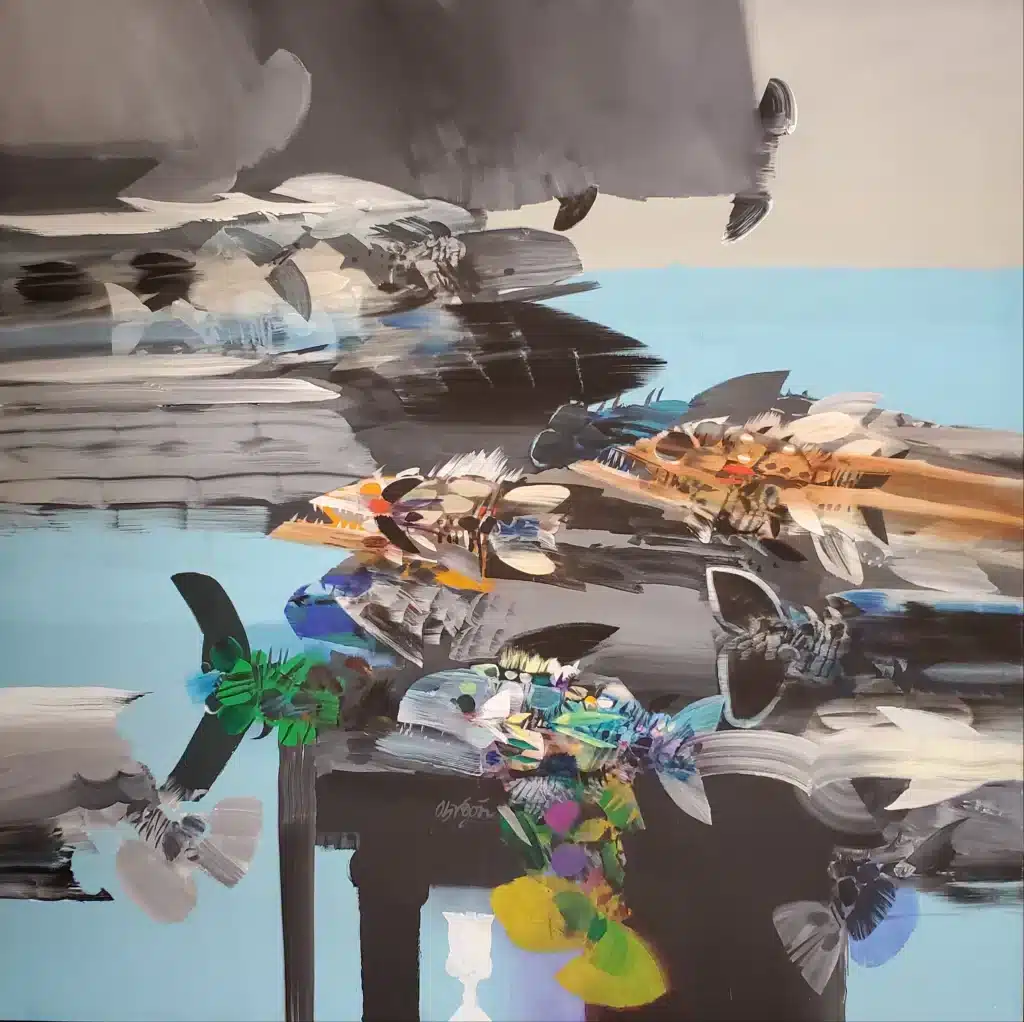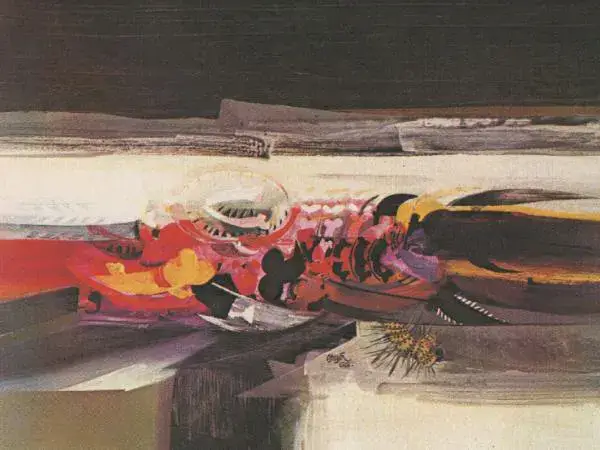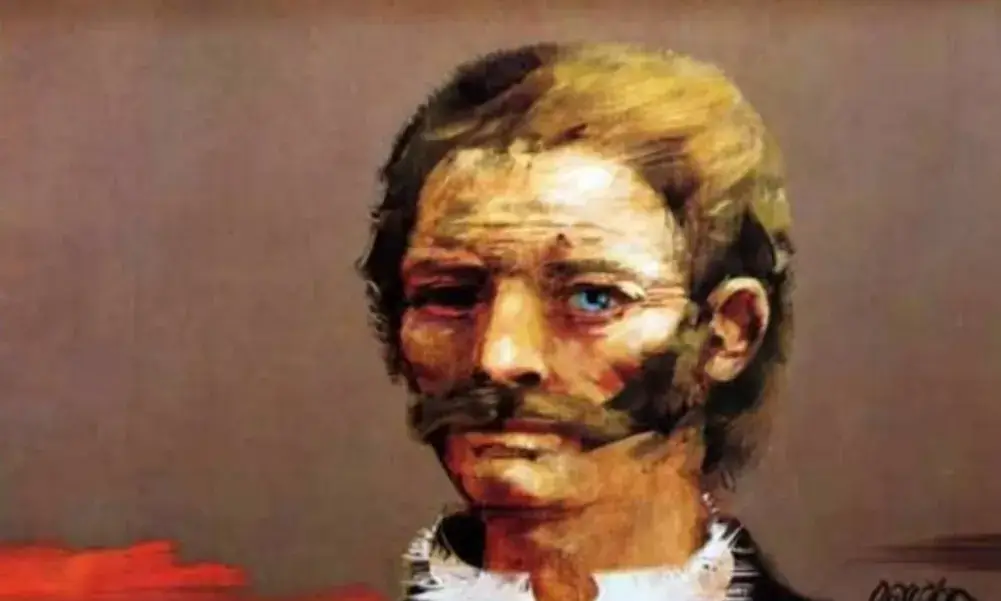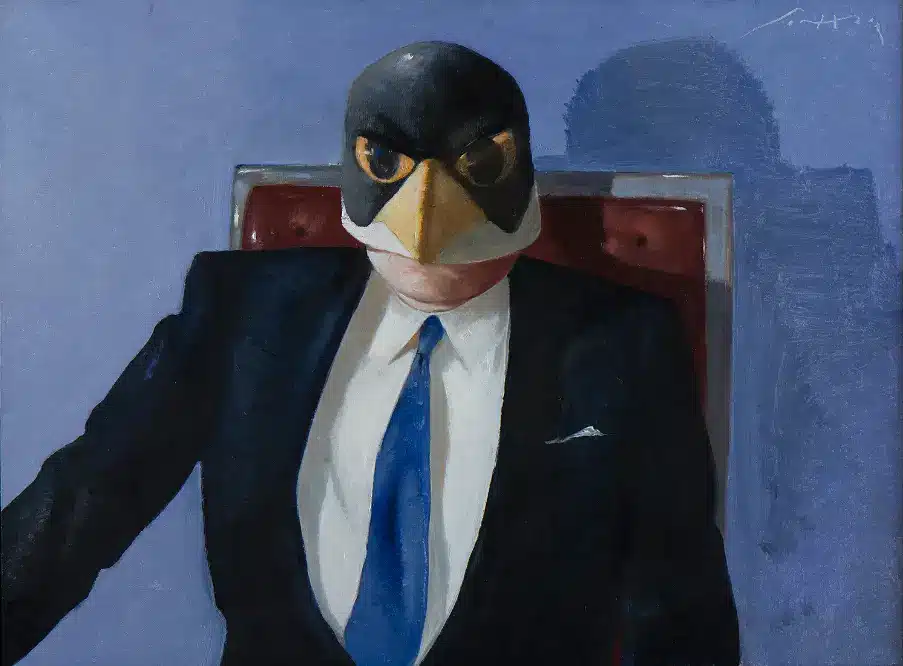Alejandro Obregón (1920-1992) is considered one of the main exponents of the renewal of Colombian art in the 20th century. He contributed significantly to the modernization of art in the country, characterizing his work by a union of elements of European art with the cultural richness and Colombian folklore.
Experimentation with perspective and composition was a key feature of Alejandro Obregón’s work. Thanks to this he was able to develop his own distinctive style. His characteristic use of color, in particular, allowed him to create unique atmospheres and emotional states in his works, as well as his fearless play with the fragmentation of figures and objects and the bold interplay between background and form.
Throughout his career, he explored diverse themes, such as nature, Colombian identity, war and the relationship between human beings and their environment. His style is distinguished by the vigorous application of color and the “dripping” technique, which allowed him to create textures and emotional atmospheres on his canvases.

He began his artistic education at the Escuela de Bellas Artes in Bogota and later studied at the Academia de San Fernando in Madrid, Spain. Upon his return to Colombia in the 1940s, he joined the movement known as “Los Independientes” (The Independents), which sought to break with established artistic conventions and explore new forms of expression.
One of the most crucial moments in Obregón’s life and work was the period of “La Violencia” in Colombia (1948-1958), an internal armed conflict that profoundly influenced his artistic perspective. During this time, he created a series of paintings that were characterized by stylized and anguished birds, symbolizing the violence and suffering that plagued his country at the time.

In this series, Obregón depicted stylized birds in poses and attitudes that convey a sense of vulnerability and uneasiness. The birds become metaphors for the civilian population caught in the midst of violence and political instability. Birds, traditionally seen as symbols of freedom and beauty, are transformed into representations of the tragedy and trauma that plagued the country.
It served as a moving testimony to a period of conflict and violence in Colombia. Through this series, he managed to transcend the limitations of painting and communicate the emotions and anguish of a society in crisis. It not only focused on the horrors of “La Violencia”, but also addresses universal themes such as human suffering, the fragility of life and the struggle for survival. Through his artistic expression, Obregón captured the painful reality of Colombian society and turned it into a powerful visual message.

Alejandro Obregón left a lasting legacy in contemporary art. His works continue to be appreciated for their rich emotional expression, innovative technique and social impact. He passed away on April 11, 1992 in Bogotá, but his influence lives on through his artistic legacy and his contribution to Colombian culture.





